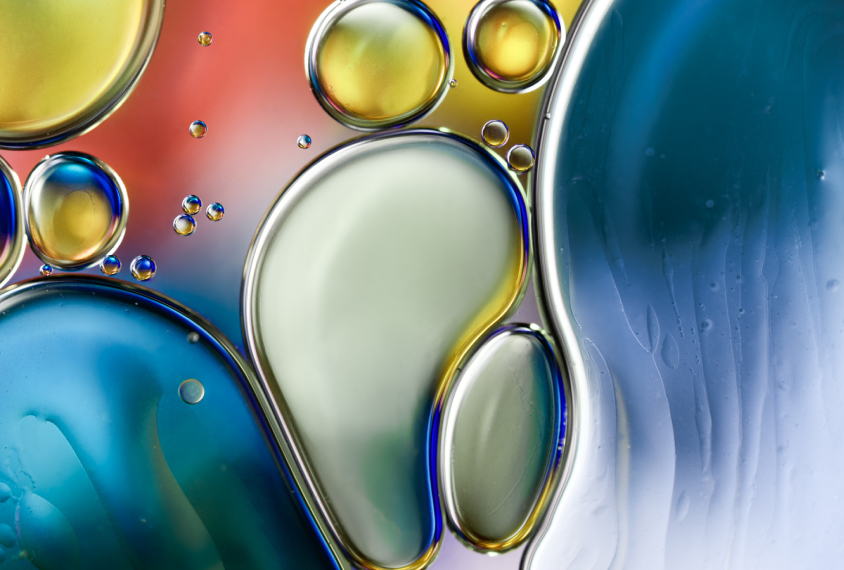SHANK1
Recent articles
How microscopic ‘condensates’ in cells might contribute to autism
A controversial idea about how cells compartmentalize their contents into droplets — like beads of oil in water — could be key to understanding autism, says Julie Forman-Kay.

How microscopic ‘condensates’ in cells might contribute to autism
A controversial idea about how cells compartmentalize their contents into droplets — like beads of oil in water — could be key to understanding autism, says Julie Forman-Kay.
The treasures of monkey island
On Cayo Santiago island, scientists track the alliances and power struggles of a colony of feral monkeys — collecting data to generate new insights into the social challenges that people with autism face.

The treasures of monkey island
On Cayo Santiago island, scientists track the alliances and power struggles of a colony of feral monkeys — collecting data to generate new insights into the social challenges that people with autism face.
Neighboring mutations in gene may spawn separate conditions
Two seemingly similar mutations in the SHANK3 gene have divergent effects on the brain and behavior.

Neighboring mutations in gene may spawn separate conditions
Two seemingly similar mutations in the SHANK3 gene have divergent effects on the brain and behavior.
Rodent learning sheds light on missed social cues in autism
Many people with autism have trouble interpreting and responding to social cues. Studying how rats learn from each other can provide insights into the human social brain, says Amiel Rosenkranz.

Rodent learning sheds light on missed social cues in autism
Many people with autism have trouble interpreting and responding to social cues. Studying how rats learn from each other can provide insights into the human social brain, says Amiel Rosenkranz.
Family of autism-linked proteins helps neurons communicate
The SHANK family of proteins, some of which are strong autism candidates, work together to facilitate brain signaling, according to unpublished results presented yesterday at the 2014 Society for Neuroscience annual meeting in Washington, D.C.

Family of autism-linked proteins helps neurons communicate
The SHANK family of proteins, some of which are strong autism candidates, work together to facilitate brain signaling, according to unpublished results presented yesterday at the 2014 Society for Neuroscience annual meeting in Washington, D.C.
SHANK3 mutations turn up in high proportion of autism cases
About 2 percent of people who have both autism and intellectual disability carry harmful mutations in SHANK3, a protein that helps organize the connections between neurons, according to a study published 4 September in PLoS Genetics.

SHANK3 mutations turn up in high proportion of autism cases
About 2 percent of people who have both autism and intellectual disability carry harmful mutations in SHANK3, a protein that helps organize the connections between neurons, according to a study published 4 September in PLoS Genetics.
Drug fixes cellular defects in autism-related disorder
A new stem-cell model of Phelan-McDermid syndrome points to a possible treatment for the rare autism-related disorder, according to a study published in Nature.

Drug fixes cellular defects in autism-related disorder
A new stem-cell model of Phelan-McDermid syndrome points to a possible treatment for the rare autism-related disorder, according to a study published in Nature.
Where will the focus on SHANK genes lead?
Geneticists react to discoveries and identify next steps for one of autism’s most promising candidate genes.

Where will the focus on SHANK genes lead?
Geneticists react to discoveries and identify next steps for one of autism’s most promising candidate genes.
SHANK mutations converge at neuronal junctions in autism
SHANK3, one of the strongest candidate genes for autism, has the potential to be a molecular entry point into understanding the synaptic, developmental and circuit origins of the disorder.

SHANK mutations converge at neuronal junctions in autism
SHANK3, one of the strongest candidate genes for autism, has the potential to be a molecular entry point into understanding the synaptic, developmental and circuit origins of the disorder.
Risk factors
To focus the search for environmental risk factors in autism, we should look for chemicals that influence the molecular pathways associated with candidate risk genes, say Pamela Lein and Marianna Stamou.

Risk factors
To focus the search for environmental risk factors in autism, we should look for chemicals that influence the molecular pathways associated with candidate risk genes, say Pamela Lein and Marianna Stamou.
Explore more from The Transmitter
Psilocybin rewires specific mouse cortical networks in lasting ways
Neuronal activity induced by the psychedelic drug strengthens inputs from sensory brain areas and weakens cortico-cortical recurrent loops.
Psilocybin rewires specific mouse cortical networks in lasting ways
Neuronal activity induced by the psychedelic drug strengthens inputs from sensory brain areas and weakens cortico-cortical recurrent loops.
Home makeover helps rats better express themselves: Q&A with Raven Hickson and Peter Kind
The “Habitat”—a complex environment with space for large social groups—expands the behavioral repertoire of rodent models, Hickson and Kind say.
Home makeover helps rats better express themselves: Q&A with Raven Hickson and Peter Kind
The “Habitat”—a complex environment with space for large social groups—expands the behavioral repertoire of rodent models, Hickson and Kind say.
Tatiana Engel explains how to connect high-dimensional neural circuitry with low-dimensional cognitive functions
Neuroscientists have long sought to understand the relationship between structure and function in the vast connectivity and activity patterns in the brain. Engel discusses her modeling approach to discovering the hidden patterns that connect the two.
Tatiana Engel explains how to connect high-dimensional neural circuitry with low-dimensional cognitive functions
Neuroscientists have long sought to understand the relationship between structure and function in the vast connectivity and activity patterns in the brain. Engel discusses her modeling approach to discovering the hidden patterns that connect the two.